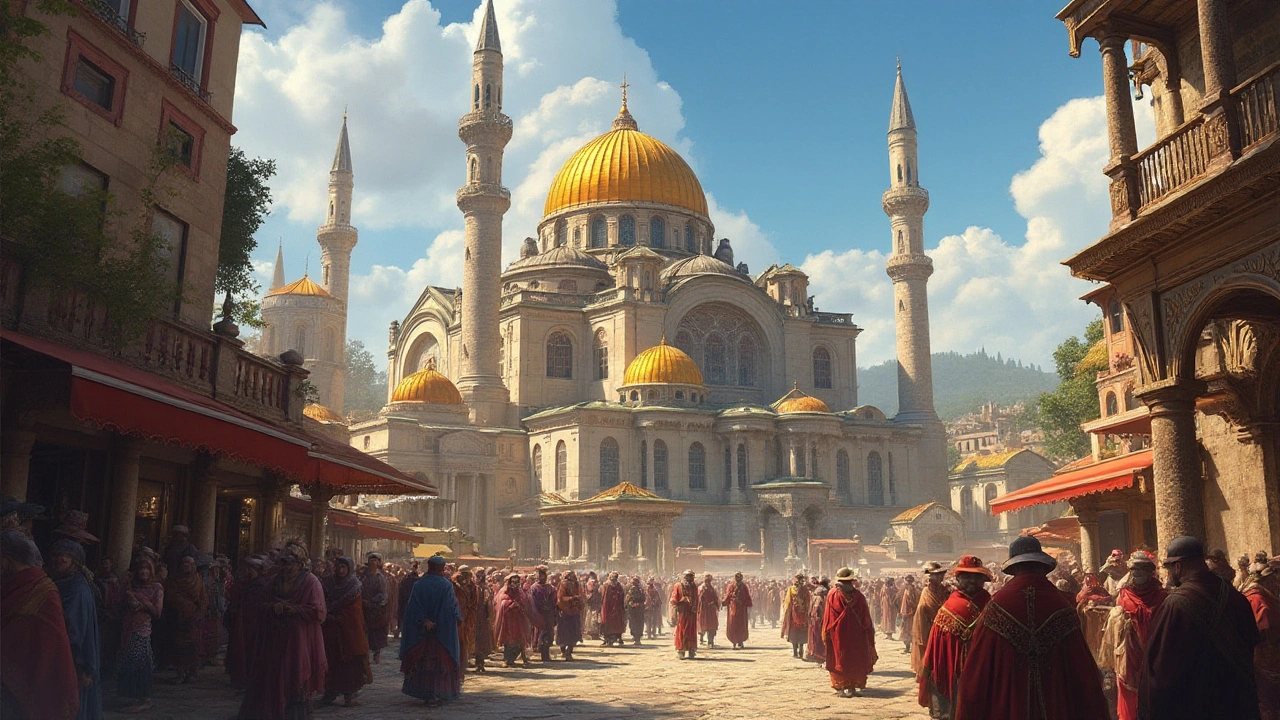Sacred spaces: how to read churches, temples and other spiritual buildings
What makes a building feel sacred? It's not just a cross, dome, or statue. Sacred spaces use light, shape, and materials to guide attention and calm the senses. If you want to understand religious architecture faster, focus on a few clear features and simple visiting habits. This short guide helps you spot styles, behave respectfully, and enjoy the details that most people miss.
Spotting styles and key features
Roman and Romanesque buildings often feel solid and heavy. Look for rounded arches, thick stone walls, and small windows—these create a quiet, enclosed feel. Gothic and Gothic Revival aim for height and light: pointed arches, ribbed vaults, flying buttresses, and lots of stained glass. They pull your eyes up toward the ceiling.
Byzantine spaces (think Hagia Sophia) use big domes, mosaics, and gold surfaces to create a glowing central space. Baroque churches bring drama with curved forms, lavish decoration, and bold contrasts. Greek Revival borrows temple fronts and columns; it reads more civic than intimate. Renaissance and Renaissance Revival focus on balance, clear proportions, and classical details.
Knowing these differences helps when you visit a city or museum. If you see domes and mosaics, think Byzantine. If you see pointed arches and tall stained glass, think Gothic. If everything looks like a temple front, that’s probably Greek Revival or Neoclassical.
Visiting tips and caring for sacred spaces
Want to get more from a visit? Go early to avoid crowds and catch soft morning light through stained glass. Wear modest clothing when required and ask before photographing services or people. Many older buildings are fragile—stay on marked paths, avoid touching frescoes, and follow local rules. Your small choices help preserve these places for everyone.
If you care about preservation, support local conservation efforts—donate to church upkeep or volunteer for guided maintenance days when offered. Learn a few facts before you go: knowing why a dome matters or what a buttress does makes the visit richer and helps you explain the place to others.
Want fast takeaways? Notice how light is used, how entrances direct movement, and where ornament is concentrated. Those three clues tell you whether a space is designed for communal worship, private prayer, or public ceremony. Use this simple checklist on your next walk: light, movement, ornament.
Sacred spaces connect art, engineering, and belief. When you spot a style or understand one intentional choice—like a high window that brightens an altar—you get closer to why the place matters. Take photos, but also take a moment to look without your phone. That memory often reveals details a camera misses.
If you want more reading, explore posts on Roman, Byzantine, Gothic Revival, and Baroque architecture for deeper examples and travel tips. Each style tells a different story about how people shaped places to meet the sacred.

Exploring Byzantine Architecture: Fusion of Art and Sacred Space
Byzantine architecture is a unique blend of art and spirituality that emerged from the Roman Empire, primarily during its Eastern period. Known for its majestic domes and intricate mosaics, this architectural style reflects the intersection of divine inspiration and aesthetic expression. It incorporated innovative engineering techniques, contributing to its lasting legacy in religious and cultural edifices. The influence of Byzantine design can be seen in modern architecture, where its principles continue to inspire architects today.
Read more